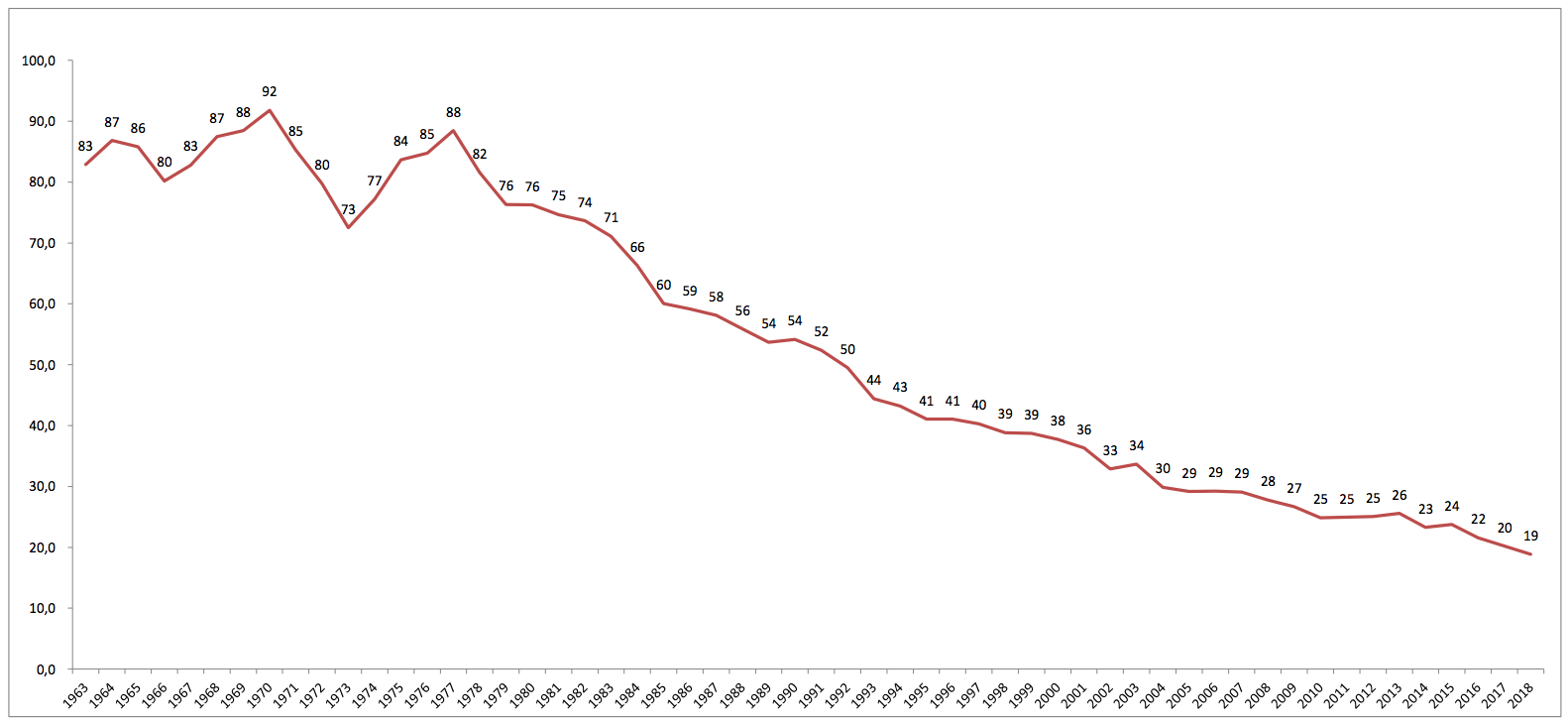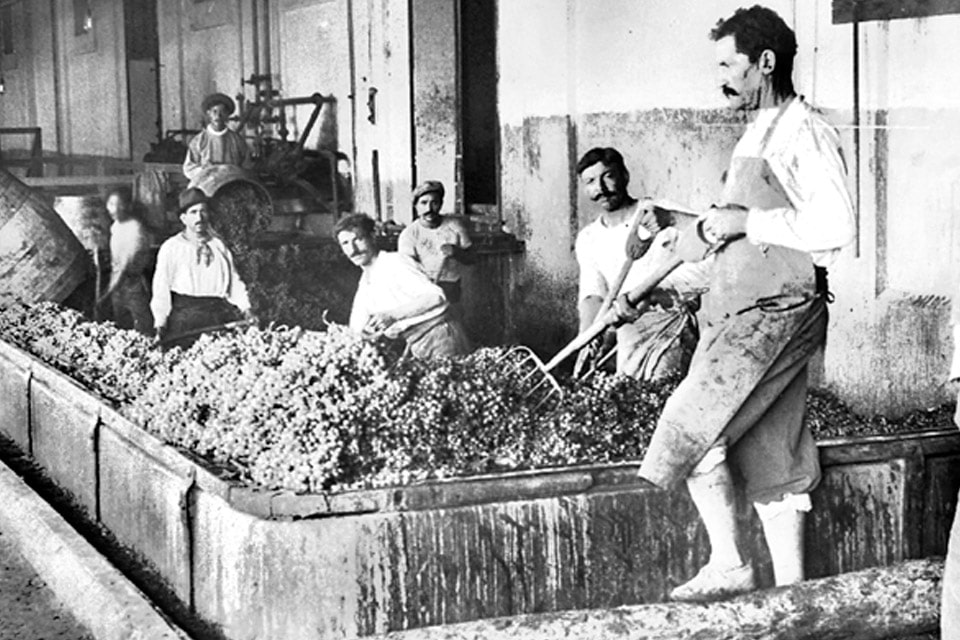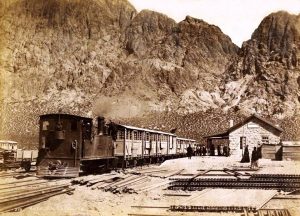You may be a Malbec lover, but do you know about the history of Argentine wine? Argentinean wines have only just started to be noticed on the international winemaking scene around 20 years ago with the ‘Malbec Boom’. However, the term ‘New World’ can be quite deceiving. Argentina actually has a long history of winemaking which stretches all of the way back to the sixteenth century! Here’s our guide to Argentina wine history and how this South American country became one of the world’s biggest wine producers.
The deeply-rooted wine culture in Argentina
As one of the biggest wine producers in the world, Argentina has a rich wine culture and significant wine consumption domestically. In fact, the only city which drinks more wine in the world than Buenos Aires is Paris.
Argentina’s wine history goes back to the early colonial period, when the first vines were brought over to Argentina from the Old World by the Spanish conquistadors who needed to produce wine for Mass.
The first cuttings are believed to have been planted in Argentina in 1556, by Father Cedrón who brought over cuttings from the Chilean Central Valley to San Juan and Mendoza. Although the first plantings were small, by the end of the sixteenth century, there were vineyards scattered throughout Argentina and planted in each region that the Spanish settled – from east to west and north to south.
Over these first two centuries of grape growing, growers naturally gravitated to the Cuyo region due to the high altitude and favourable semi-arid climate conditions with plenty of water access for irrigation. There were 120 vineyards in Mendoza alone by 1739 according to a census.
Argentine wine history: The Criolla and colonial period
The Jesuit missionaries brought cuttings mainly from Spain’s Canary Islands. These early varieties on the continent soon bred native varieties, which led to a big family of Criolla varieties (read about Criolla grape varieties on this article).
Criolla grapes continued to be the most important varietals in Argentina for the next 300 years. They produced a very high yield of grapes which kept growers happy in terms of producing a large quantity. However, the high yielding vines meant that the grapes had a lower colour and flavour intensity – arguably making lesser quality wines.
Argentina wine history during the 19th & 20th centuries: the influence of European immigration
Wine production remained completely artisanal in Argentina for almost three centuries after the Spanish missionaries planted the first vines. The first industrial wineries were founded in the early 19th century following independence but were limited to a certain extent by civil wars in Argentina from 1814 to 1880 which had significantly hindered the winemaking industry’s development.
The winemaking boom in Argentina
Progress was stagnant until the arrival of European immigrants during the 19th century and the beginning of the 20th century catalysed the winemaking boom. The outbreak of phylloxera which destroyed vineyards throughout the European continent during the latter half of the nineteenth century, as well as the political stability around the outbreak of WW1, were the major push factors which drove European immigrants to try their luck in the New World.
These immigrants mainly came from winemaking countries (notably Spain, Italy and France) and so they used their know-how to develop the Argentine winemaking industry. They also brought over new technologies and set up workshops to repair winemaking machinery.
Indeed, there are many cases of European immigrants from winemaking regions, such as the Italians Juan Giol and Felipe Rutini, who came from humble backgrounds and managed to establish their own wineries in Mendoza. Many European immigrants at the time went on to become influential figures in Mendoza and in Argentina’s wine industry, and in the 19th century, the modern winemaking industry in Argentina was born.
The Founding Father of Malbec in Argentina, Michel Aimé Pouget
Perhaps the most famous European to have impacted the Argentinean winemaking industry is the French agricultural engineer Michel Aimé Pouget. It all began when the Governor of the Cuyo region (who would later become the President of Argentina), Domingo Faustino Sarmiento, sent a proposal to the national Argentinean government to develop and expand the winemaking industry. Pouget was hired as a viticulture specialist and this important event is celebrated every year with what is now known as World Malbec Day.
Pouget founded the first agricultural school and vine nursery in Argentina in Mendoza and he introduced French grape varieties including Cabernet Sauvignon, Merlot, Pinot Noir and Malbec. These grapes adapted very well to the terroir and produced wines of more concentration and better quality wine than the Criolla varieties.
Malbec, or la uva francesa as it was known, began to grow significantly in number and importance in Argentina, and Argentina’s vine gene pool grew increasingly diverse throughout the late 19th century and early 20th century with many varieties from all over Europe.
Argentina wine history & the development of the railway
A major factor which facilitated the development of the Argentinean winemaking industry was the arrival of the Transandine Railway in Mendoza in 1885. The railway allowed wines to be exported from Mendoza to the greater market of Buenos Aires.
It also triggered the phenomenon of urbanisation as an influx of immigrant workers and their families settled in the rural winemaking regions. Wineries started to pop up alongside the tracks and from 1880 to 1900, planted vineyard hectarage grew by more than fivefold.
The industry was stinted during the crisis of the 1930s, but towards the latter half of the 20th-century consumption was once again on the rise – and Argentina hit its heyday of wine production and consumption in the 1970s.

Modern Argentine wine history: The 1990s to early 2000s & exports of high-quality wines
Until the end of the 20th century, Argentinean wineries produced large quantities of low-quality wines destined for the domestic market. Winemakers understood that it was not worth investing in the time and equipment to produce top-quality wines because high-end consumers preferred imported fine wines and the majority of domestic consumption was of table wines. Argentina remained within the top 10 wine producers in the world throughout the twentieth century. However, very few bottles made it overseas.
Facing a diminished domestic market, however, meant that Argentina’s wine industry had to adapt in order to survive. The Argentineans started to take some tricks from the winemaking books of their neighbours.
The Chileans had begun to tailor their wines to the export market much earlier on. Chile never had a domestic market the size of Argentina, and yet it had grown in wine production over the past decades to become an important producer and exporter. Part of that success was due to Chilean wineries contracting international winemakers to modernise the Chilean wine industry with their techniques and expertise.
Open borders, open minds: An international outlook for Argentina
Argentina started to follow in Chile’s footsteps in looking outwards to the wine world in the 1990s during the period of Neoliberalism during the presidency of Carlos Menem. He attached the value of the peso to the dollar and introduced free trade which allowed the Argentinean industry to develop.
In 2001, Argentina faced another life-changing crisis. The value of the peso shot down against the dollar and although that was negative for the Argentine economy, it made Argentine wines much more competitive on the export market.
By the mid-90s Argentina had a handful of international and flying winemakers advising its wineries and helping improve the standards of Argentine wine across the board. Notable examples include Nicolás Catena hiring US-born winemaker Paul Hobbs to transform his production of Chardonnay; and Arnaldo Etchart in Salta bringing Bordeaux-based wine consultant Michel Rolland to improve his red wines in Cafayate.
The influx of foreign knowledge and experience led to an influx in investment in new technology including stainless steel tanks and French oak barrels, as well as a different approach to viticulture – favouring concentration and maturity of grapes, over yield and productivity.
Malbec booms and so does wine tourism
Although Malbec plantations had actually been in decline a couple decades before, during the late 90s and early 2000s Argentina’s Malbec started to be loved and appreciated by the international market. It soon became Argentina’s most exported wine and increased demand for Argentine wine, increasing exports of Argentine wine from 55,000 hectolitres in 1990 to 492,000 hectolitres in 2000, according to the INV.
In a relatively short time, Argentina had changed its image and production from a bulk producer of low-quality wines for an undemanding domestic market to a producer of highly sought-after export quality wines.
The wine tourism boom & future generations of Argentine wine lovers
Wineries in Argentina, and largely Mendoza, saw a glimmering opportunity to start to offer wine tourism as more people travelled through since the 2000s. Today Mendoza is a major wine capital in the world, and wine tourism is a significant part of the business model for most wineries in Mendoza and has allowed for the development of dozens of hotels and restaurants.
Mendoza’s wineries received over 1.1 million visitors in 2018, 36% of whom were foreigners. Four in every 10 wine tourists are Brazilian (which is one of Argentina’s most important export markets), followed by North American and English visitors.
Wine tourism has not only become important in terms of selling wine on the cellar door but more importantly the experiences visitors have in Argentine wine country are fondly remembered for life and drive consumption in their own country throughout the year.
Argentina created a very strong brand for itself thanks to its world-renowned Malbec wine, but the opportunity of tasting Argentine wine in situ is also opening people’s eyes to the many different terroirs and grape varieties of Argentina today.
Read more about the history of winemaking in Argentina, its wine regions & wineries
- History of Malbec in Argentina
- The Italian immigrant influence in Argentina
- Argentina winery guide
- La Rioja wine region guide & regional profile
- Calchaquí Valleys wine region guide
- Catamarca wine guide & regional profile
- Jujuy wine guide & regional profile
- Guide to Eastern Mendoza & its wine regions
- Río Negro wine guide & regional profile
Recommended reading
- Mount, Ian (2012), The Vineyard at the End of the World



